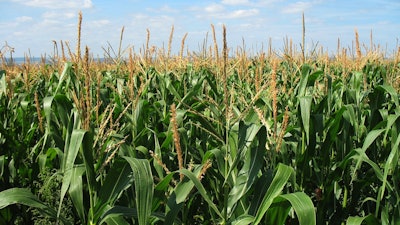
The latest agricultural export data from the USDA's Foreign Agricultural Service provides a detailed overview of sales and shipments across various commodities for the week spanning from July 26 to August 1, 2024. This information is crucial for understanding the current state of U.S. agricultural exports and their impact on the economy.
Wheat sales and shipments: In the wheat sector, exports experienced a slight decline. The net sales for the 2024/2025 season totaled 274,000 metric tons (MT), which represents a 4% decrease compared to the previous week. Additionally, this figure is 23% lower than the four-week average, indicating a downward trend in wheat sales. Major importers during this period included countries such as Taiwan, Japan, and Ecuador, which have consistently relied on U.S. wheat for their domestic needs. Despite the drop in sales, weekly exports saw a positive shift, rising by 9% to reach 496,600 MT. This increase in weekly exports suggests that while net sales may have declined, there is still a demand for U.S. wheat in the global market.
Corn market dynamics: The corn market, on the other hand, showed a significant increase in exports. Net sales for the 2023/2024 season reached an impressive 485,400 MT, marking a robust 32% rise from the prior four-week average. This surge in sales highlights the strong demand for U.S. corn, particularly from major importers like Mexico and Spain. The weekly exports of corn surged by 26% from the previous week, totaling 1,303,300 MT. This increase not only reflects the growing appetite for corn in international markets but also underscores the importance of corn as a staple agricultural product for many countries.
Sorghum and barley: In contrast, sorghum sales experienced a notable drop of 67% from the previous week, totaling only 54,500 MT. This decline raises questions about the factors influencing sorghum demand. However, barley sales remained steady, with a total of 800 MT exported to South Korea. Notably, sorghum exports were primarily directed to China, with a total of 166,200 MT shipped. This indicates that while overall sales may have decreased, there is still a consistent demand for sorghum from specific markets.
Rice developments: The rice sector also showed promising developments. Net sales for rice reached 19,300 MT for the new marketing year starting August 1. Significant exports were made to countries like Haiti and El Salvador, which rely on U.S. rice to meet their consumption needs. As of the end of July, total rice exports amounted to 3,313,100 MT, reflecting a remarkable increase of 79% over the previous year. This growth in rice exports highlights the expanding market for U.S. rice and its importance in global food security.
Soybean insights: In the soybean market, sales amounted to 325,400 MT for the 2023/2024 season, showing a slight increase from the previous week. The primary importers of U.S. soybeans during this period were China and Indonesia, both of which are significant markets for soybean products. Weekly exports for soybeans reached 352,000 MT, indicating a steady demand for this essential crop.
Oilseeds and oils: The soybean oil market also saw significant growth, with sales increasing notably. Mexico emerged as the primary importer of U.S. soybean oil, reflecting the strong demand for this product in the region. Conversely, cotton sales experienced a notable decrease, primarily due to reductions in exports to China, Pakistan, and Vietnam. This decline in cotton sales may be attributed to changing market dynamics and competition from other cotton-producing countries.
Livestock products: In the livestock sector, beef and pork sales exhibited varied trends. Beef sales decreased by 43% from the previous week, totaling 10,000 MT. In contrast, pork sales increased by 10%, reaching 34,600 MT. Major markets for U.S. meat products included Japan, South Korea, and Mexico, which continue to be key players in the importation of American beef and pork.
This comprehensive snapshot underlines the ongoing fluctuations in the global demand for U.S. agricultural products. It highlights the significant role of exports in supporting American agriculture and the economy as a whole. Understanding these trends is essential for farmers, policymakers, and stakeholders in the agricultural sector.

















